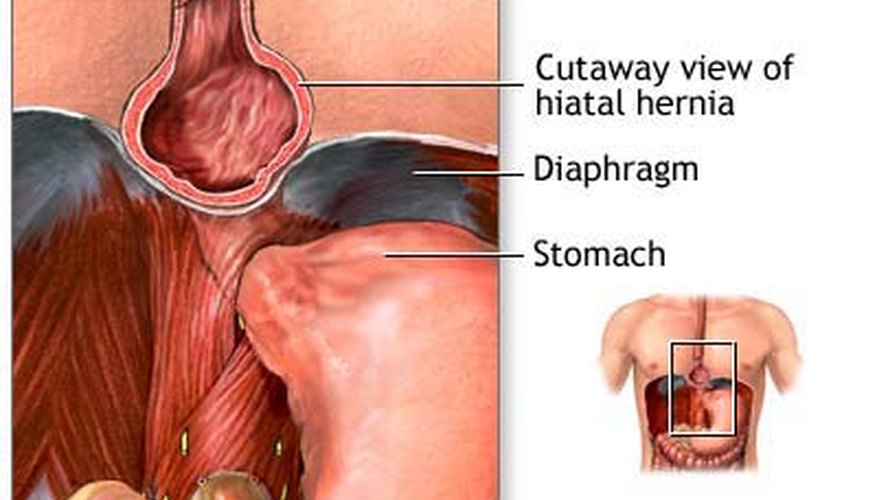A hernia occurs when one part of the body projects, or sticks out, through a gap or opening into another part. A hiatus hernia is specifically when part of your stomach pushes through the opening in the oesophagus.
Although small hiatus hernias don't usually cause pain, a large hiatus hernia can allow food and acid to back up into your oesophagus, leading to common conditions such as acid reflux, heartburn and chest pain. Very large hiatus hernias require nothing short of surgery to repair, but most can be prevented or treated with proper exercise.
The "Pelvic Thrust" Exercise
The stomach will need strengthening if you are looking for a way to prevent or treat a mild hiatus hernia. For improving one's stomach strength try the following stomach-tightening exercise:
For the first exercise, lie on your back and bend your knees, leaving your feet on the floor. It's as if you're about to do a sit-up.
Now, lift your buttocks and lower your back off the floor.
Make sure to leave your feet and shoulders on the floor so as to support your weight.
Lower yourself back to your starting position very slowly and very gently. You don't want to aggravate anything.
Repeat this 10 times.
Try doing this several times throughout the day. The reason you don't want to do it more than 10 times a day is because you don't want to tear anything or make the condition worse. By doing less repetitions more frequently, you are saving yourself from a potentially worse hernia.
Strenghthen Your Diaphragm

One way to soothe the pain caused by a hiatus hernia, or heal it altogether, is to try some deep-breathing exercises. This serves to strengthen your diaphragm.
At home, you can practice with something as simple as party balloons.
Try blowing up 10 in one sitting.
If you can do two sittings, one in the morning and one at night, that will help. When blowing balloons up, your chest, lungs and diaphragm work much harder than when you are simply breathing.
Further, learning how to breathe through your diaphragm is important for those with hiatus hernias. Try using your diaphragm consciously to breathe slowly.
- One way to soothe the pain caused by a hiatus hernia, or heal it altogether, is to try some deep-breathing exercises.
- Further, learning how to breathe through your diaphragm is important for those with hiatus hernias.
You can accomplish this by allowing your stomach to expand and contract purposefully. It will become more powerful with each practice. You can do this standing, but it's usually easier to start by lying on your back.
The Right Kind of Diet For Soothing Hiatal Hernias

No amount of exercise will help cure the effects of a hiatus hernia (heartburn, acid reflux) if you're not eating the right foods. While the above exercise will slowly and purposefully get your stomach out of your oesophagus and strengthen your midsection enough to prevent it from happening, the right diet can make you feel a lot better about exercising.
- No amount of exercise will help cure the effects of a hiatus hernia (heartburn, acid reflux) if you're not eating the right foods.
First, reduce (or completely take out) all acidic food from your diet.
Any acidic or sour food that gives you burning sensation is going to make your heartburn worse. No spicy food, no fruits high in citric acid (oranges being one) or caffeinated beverages.
Bananas are a good, neutral fruit that can settle the stomach.
Apples can cause heartburn in some people, so start with the sweetest apples and work your way to sour green apples slowly. In the grocery store, look for the Fiji Apple. Those are the least acidic.
As far as vegetables go, you can eat more of those than fruits, but tomatoes are big no.
Most green vegetables are safe to eat, including, but not limited to spinach, green beans, broccoli and green beans. Carrots are also very safe to eat.
